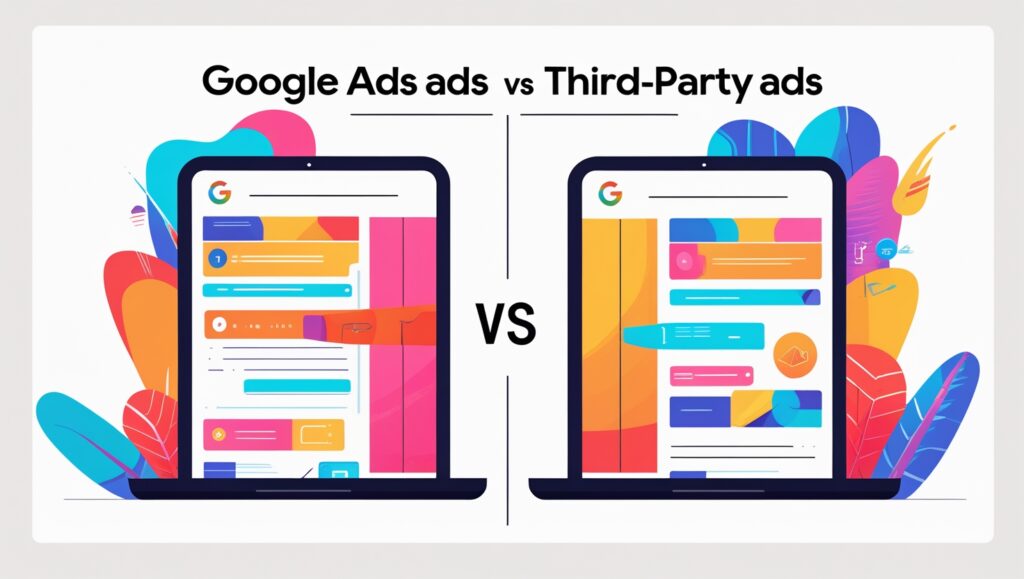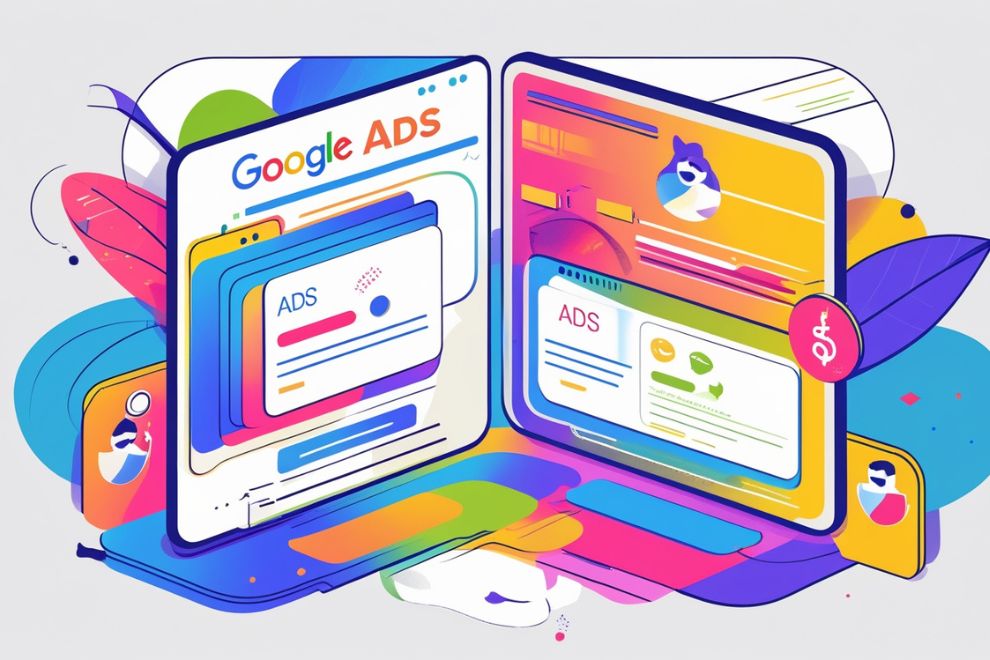In the world of digital advertising, businesses have several options to promote their products and services. Two of the most popular methods are Google Ads and third-party ads. While both are effective in reaching a broad audience, they differ significantly in various aspects. In this article, we will explore the top 10 differences between Google Ads and third-party ads, helping you understand which option might be the best fit for your marketing strategy.
Key Insights on the Top 10 Differences Between Google Ads and Third-Party Ads for Effective Advertising
1. Platform Ownership
- Google Ads: Google Ads, formerly known as Google AdWords, is managed directly by Google. Advertisers use Google’s platform to create, manage, and display their ads across Google’s vast network, including search results, YouTube, and Google Display Network (GDN).
- Third-Party Ads: Third-party ads are managed by independent ad networks or platforms, such as Media.net, Taboola, or Outbrain. These platforms connect advertisers with a variety of publishers and websites to display ads.
Key Difference: Google Ads is a self-contained advertising platform owned and operated by Google, while third-party ads involve third-party networks facilitating the ad placement process.
2. Ad Placement Control
- Google Ads: With Google Ads, advertisers can target specific placements, such as particular websites or videos within the Google Display Network or even target ads based on search keywords on Google Search.
- Third-Party Ads: Third-party ad networks may provide less granular control over ad placement. Advertisers often rely on the ad network’s algorithm to place ads on a broad range of websites or content.
Key Difference: Google Ads offers more control over where your ads appear compared to third-party networks, which may place ads across various sites within their network.
3. Targeting Options
- Google Ads: Google Ads offers robust targeting features, such as keyword targeting, location targeting, device targeting, demographic targeting, and even remarketing options.
- Third-Party Ads: Third-party networks may offer targeting options as well, but the depth of targeting is usually not as extensive as Google Ads. Their focus may be more on contextual targeting based on the content of the website.
Key Difference: Google Ads generally provides more comprehensive and precise targeting options than third-party ad networks.
4. Ad Formats
- Google Ads: Google Ads supports a wide range of ad formats, including text ads, display ads, video ads (on YouTube), and shopping ads. This flexibility allows advertisers to choose the most suitable ad format for their goals.
- Third-Party Ads: Third-party ads primarily focus on display ads or native ads (content-based ads). However, some third-party networks may offer limited support for video or other formats.
Key Difference: Google Ads provides a more diverse range of ad formats compared to third-party networks, which are often limited to display and native ads.
5. Budget Control
- Google Ads: Google Ads allows advertisers to set a daily or campaign-specific budget and automatically optimizes bids to maximize results within the allocated budget. It also offers flexible bidding strategies like cost-per-click (CPC), cost-per-thousand impressions (CPM), and cost-per-acquisition (CPA).
- Third-Party Ads: Many third-party ad networks also offer flexible budgeting options, but the bidding models may be more rigid or less varied. Some networks may not provide as much insight or control over your ad spending.
Key Difference: Google Ads generally offers more flexible and transparent budget control and bidding options.

6. Cost-Effectiveness
- Google Ads: Google Ads can be highly cost-effective, especially if advertisers target specific keywords with a clear return on investment (ROI). However, bidding for competitive keywords can drive up costs, particularly in industries with high competition.
- Third-Party Ads: Third-party ad networks tend to have lower entry costs compared to Google Ads, which might make them appealing to smaller businesses or those with limited budgets. However, they may not always offer the same level of targeting precision, which could impact ROI.
Key Difference: Google Ads may be more expensive but offers better targeting and potentially higher ROI, while third-party ads are often more budget-friendly with less precision.
7. Performance Tracking and Analytics
- Google Ads: Google Ads offers detailed performance tracking through Google Analytics and its built-in reporting features. Advertisers can monitor impressions, clicks, conversions, and more in real time, giving them valuable insights to optimize their campaigns.
- Third-Party Ads: While third-party networks do offer performance tracking, the data may not be as comprehensive or easy to integrate with other tools like Google Analytics. The tracking features can vary significantly between networks.
Key Difference: Google Ads provides more advanced and comprehensive performance tracking and analytics compared to third-party ad networks.
8. Ease of Use
- Google Ads: Google Ads is a highly sophisticated platform with many features and tools, which can be overwhelming for beginners. However, Google provides various tutorials, guides, and support to help users get the most out of the platform.
- Third-Party Ads: Many third-party ad networks offer simpler interfaces and may be easier to use for beginners. However, this simplicity may come at the cost of fewer advanced features and customization options.
Key Difference: Google Ads offers more robust tools but may require a steeper learning curve, whereas third-party ad platforms tend to be easier to use but with fewer features.
9. Ad Network Reach
- Google Ads: Google Ads offers a massive reach, as it connects to Google’s extensive network, including Google Search, YouTube, Gmail, and millions of partner sites in the Google Display Network.
- Third-Party Ads: Third-party ad networks may have access to a wide range of websites, but they generally don’t have the same expansive reach as Google Ads, especially in terms of search advertising.
Key Difference: Google Ads offers a significantly larger network reach compared to third-party ad networks.
10. Reputation and Trust
- Google Ads: Google Ads is well-known and trusted by both advertisers and users. Its ads appear on high-quality websites, making them more likely to be viewed and clicked by users.
- Third-Party Ads: Third-party ads may not carry the same level of trust or credibility. Ads from lesser-known networks can sometimes be perceived as less authoritative or more intrusive, depending on the sites they appear on.
Key Difference: Google Ads benefits from a strong reputation and trust, whereas third-party ads may be perceived as less reliable depending on the ad network.
Both Google Ads and third-party ads have their unique advantages and limitations. Google Ads provides superior targeting, reach, and performance tracking, making it an excellent choice for businesses aiming for precision and high ROI. On the other hand, third-party ads may be more cost-effective and easier to use for those with simpler advertising needs or smaller budgets.
When choosing between the two, it’s essential to consider your specific goals, budget, and the level of control you need over your campaigns. By understanding the key differences, you can make a more informed decision and develop an advertising strategy that works best for your business.


